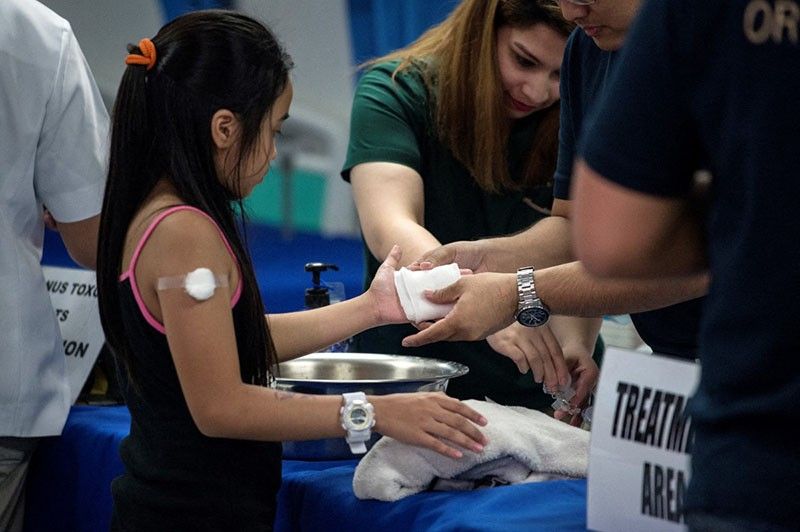DOH: Kwitis burns unsuspecting 72-year-old as firecracker injuries climb to 107

MANILA, Philippines — Injuries due to pyrotechnic devices continue to rack up days ahead of the New Year festivities, with survivors already breaching the 100 mark.
The Department of Health's fireworks-related injury (FWRI) report — covering the time period of December 29 to early morning of December 30 — revealed 11 new cases.
"Fireworks injuries spare no one: young or old, male or female, active or passive in involvement," said the DOH in a statement released on Saturday.
"We report today the new case of a 72/M from NCR who sustained burns and abrasions due to Kwitis (skyrocket) lit by someone else on the street."
Among those who were included in the latest set of cases are the following:
- youngest: 6-year-old
- oldest: 72-year-old
- males: 9
- females: 2
- occured at home and in the streets: 11
- due to illegal fireworks: 6
- passive involvement: 6
- active involvement: 5
"The new cases include the abovementioned oldest case thus far this year," the DOH said.
"Also included is a new amputation case: a 19/M from Cagayan Valley who actively used the illegal Pla-pla, resulting in a mangled left hand. There have been no additional reports of ingestion thus far."
The DOH observed that most of Saturday's cases only had passive involvement, affecting onlookers of any age or sex.
Most FWRIs hail from NCR
Among the overall 107 FWRIs since the DOH's monitoring, most of which came from the following regions:
- National Capital Region: 38%
- Central Luzon: 11%
- Ilocos Region: 11%
- Soccsksargen: 7%
- Cagayan Valley: 5%
- Bicol Region: 5%
- Calabarzon: 5%
- Western Visayas: 5%
Around 97% of all FWRIs at the moment were documented to have happened at home or in the streets, mostly by males with active involvement.
The top ranking fireworks that caused the most injuries (72%) are the following:
- boga
- 5-star
- kwitis
- piccolo
- pla-pla
- luces
- whistle bomb
"Illegal fireworks (marked with an asterisk) are to blame for about six out of every ten cases (63, 59%)," the DOH said.
Instead of actively participating, government health officials recommend watching community fireworks displays from a safe distance to prevent unnecessary hazards and injuries.
- Latest
- Trending

























